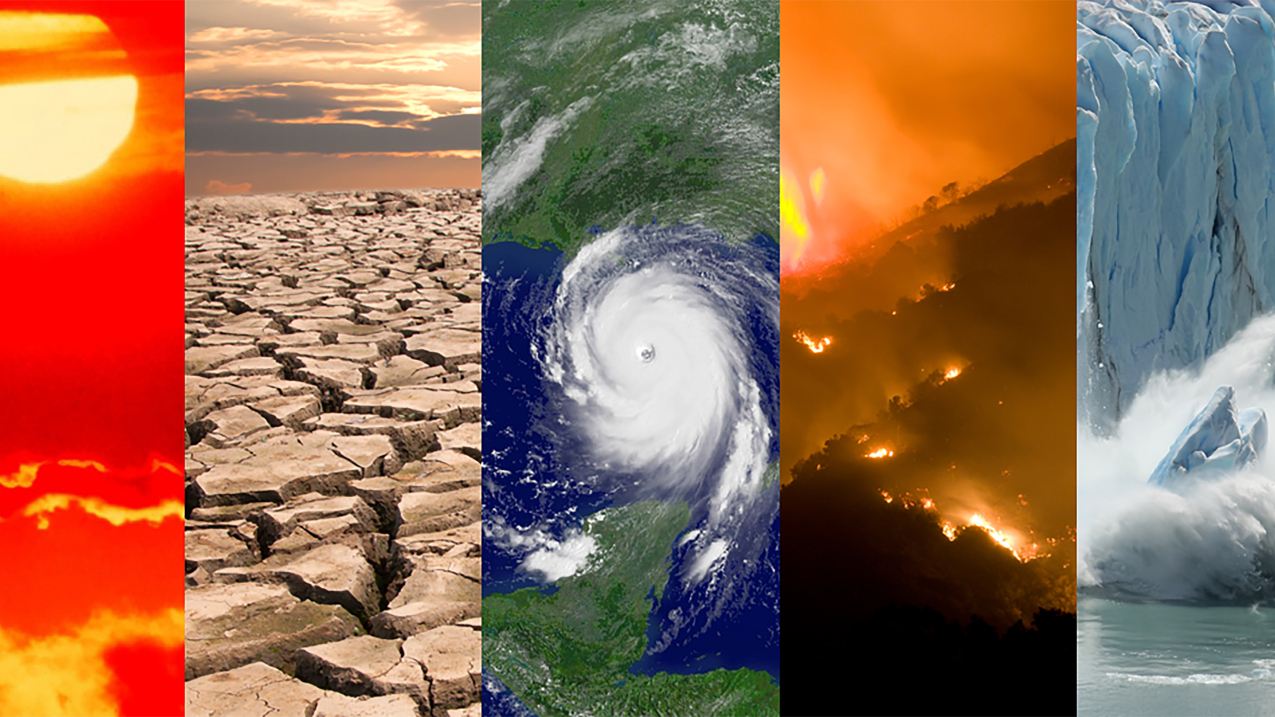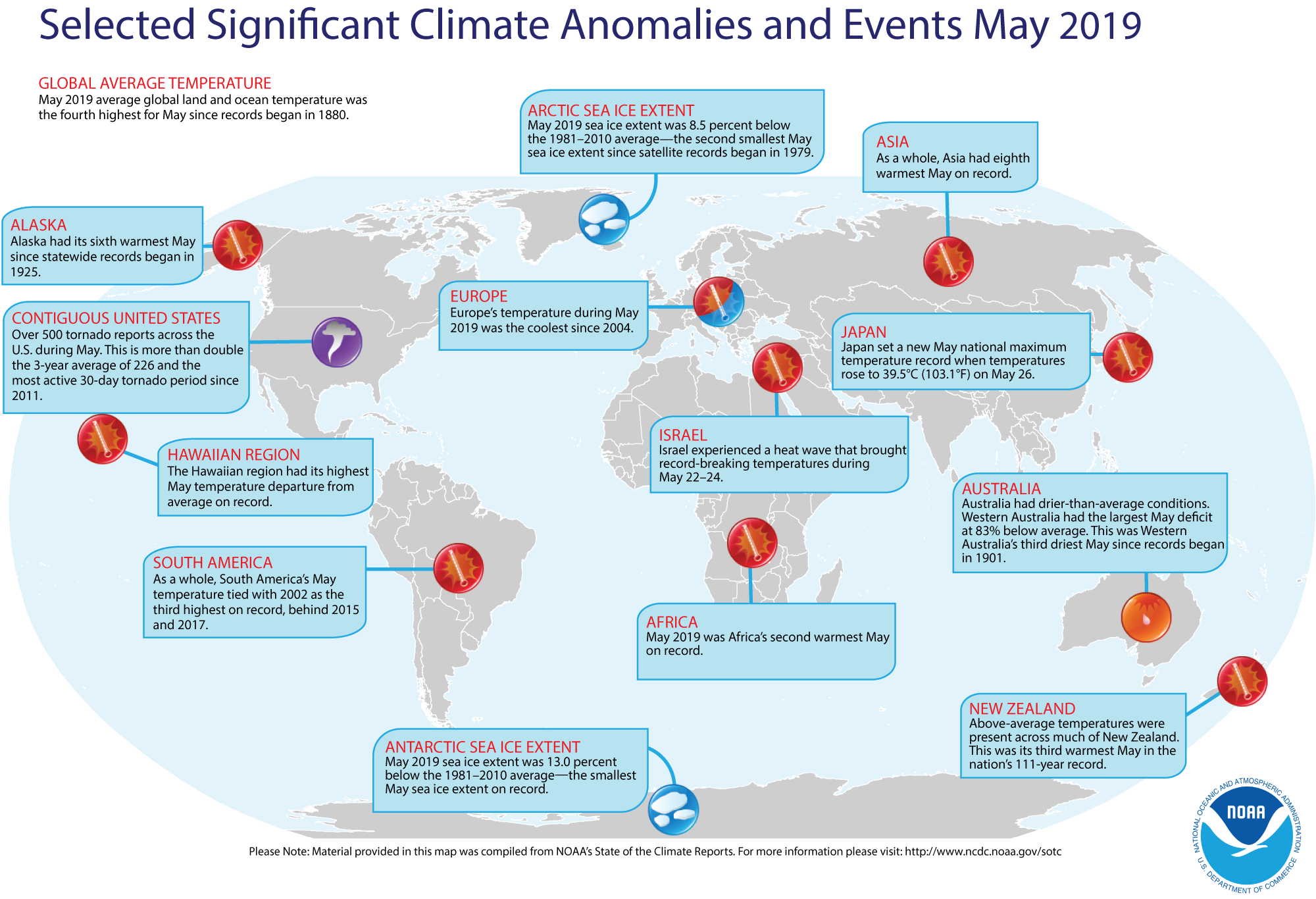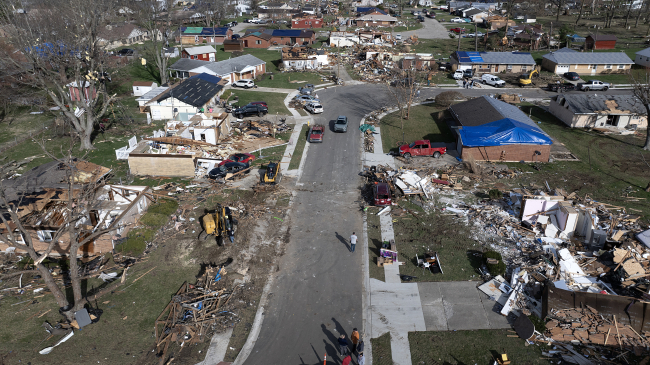Antarctic sea ice coverage shrank to a record low last month

A collage of typical climate and weather-related events: heatwaves, drought, hurricanes, wildfires and changes in sea ice coverage. (Image credit: NOAA)
Heat last month, in certain areas of the globe, not only broke records for May, but also reached all the way down to the bottom of the world where Antarctic sea-ice coverage hit a new low.
Here’s a closer look into NOAA’s latest monthly global climate report:
Climate by the numbers
May 2019
The average global temperature in May was 1.53 degrees F above the 20th-century average of 58.6 degrees F, making it the fourth-hottest May in the 140-year record (May 2016 ranking as hottest May to date), according to scientists at NOAA’s National Centers for Environmental Information. Last month was also the 43rd consecutive May and 413 consecutive month with above-average temperatures.
Year to date I January through May
The period from January through May produced a global temperature 1.67 degrees F above the 20th-century average of 55.5 degrees F, making it the third-hottest year to date on record. Record-breaking heat affected parts of the southern half of Africa; Australia; southeastern Brazil; northern North America; Asia; parts of the southern oceans; the Barents Sea; and areas of the North Pacific Ocean.

More notable stats and facts
-
Shrinking sea ice kept shrinking: Average Arctic sea-ice coverage (extent) in May was 8.5% below the 1981-2010 average – the second-lowest for May on record. Average Antarctic sea-ice coverage was 13.0 % below average – the smallest on record for May.
-
Pockets of “cool” could be found, though: Europe, the Caribbean and North America had their coolest May since 2004, 2009 and 2011, respectively.
More > Access NOAA’s climate report and download images from the NCEI website.
Media contact
John Leslie, 301-713-0214



